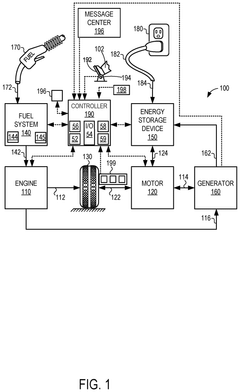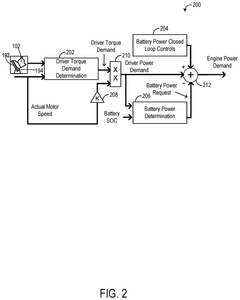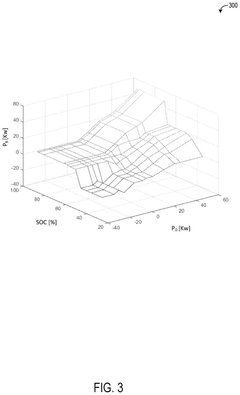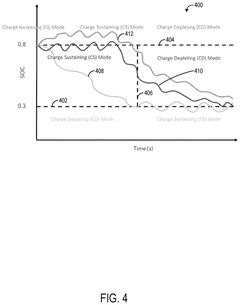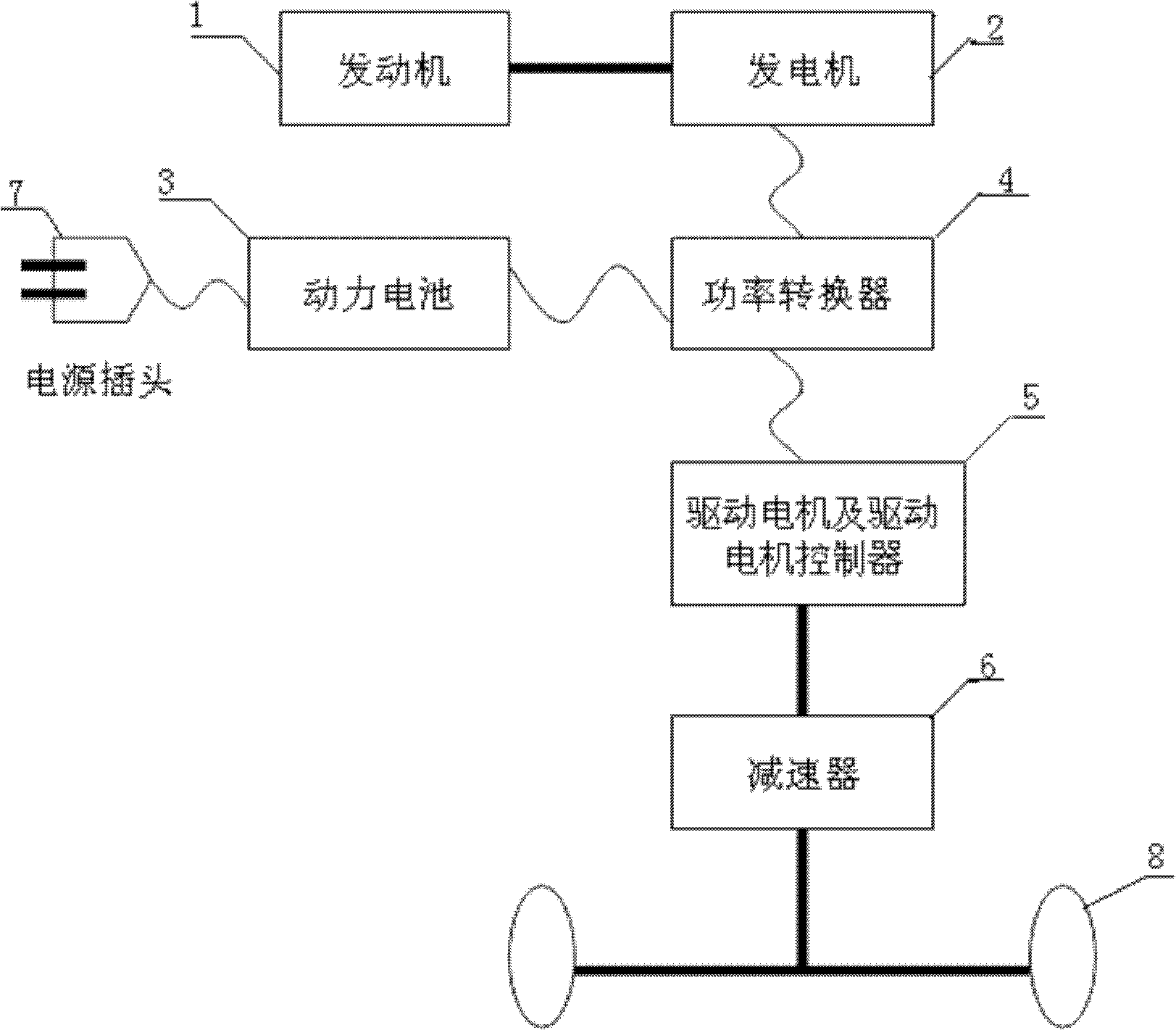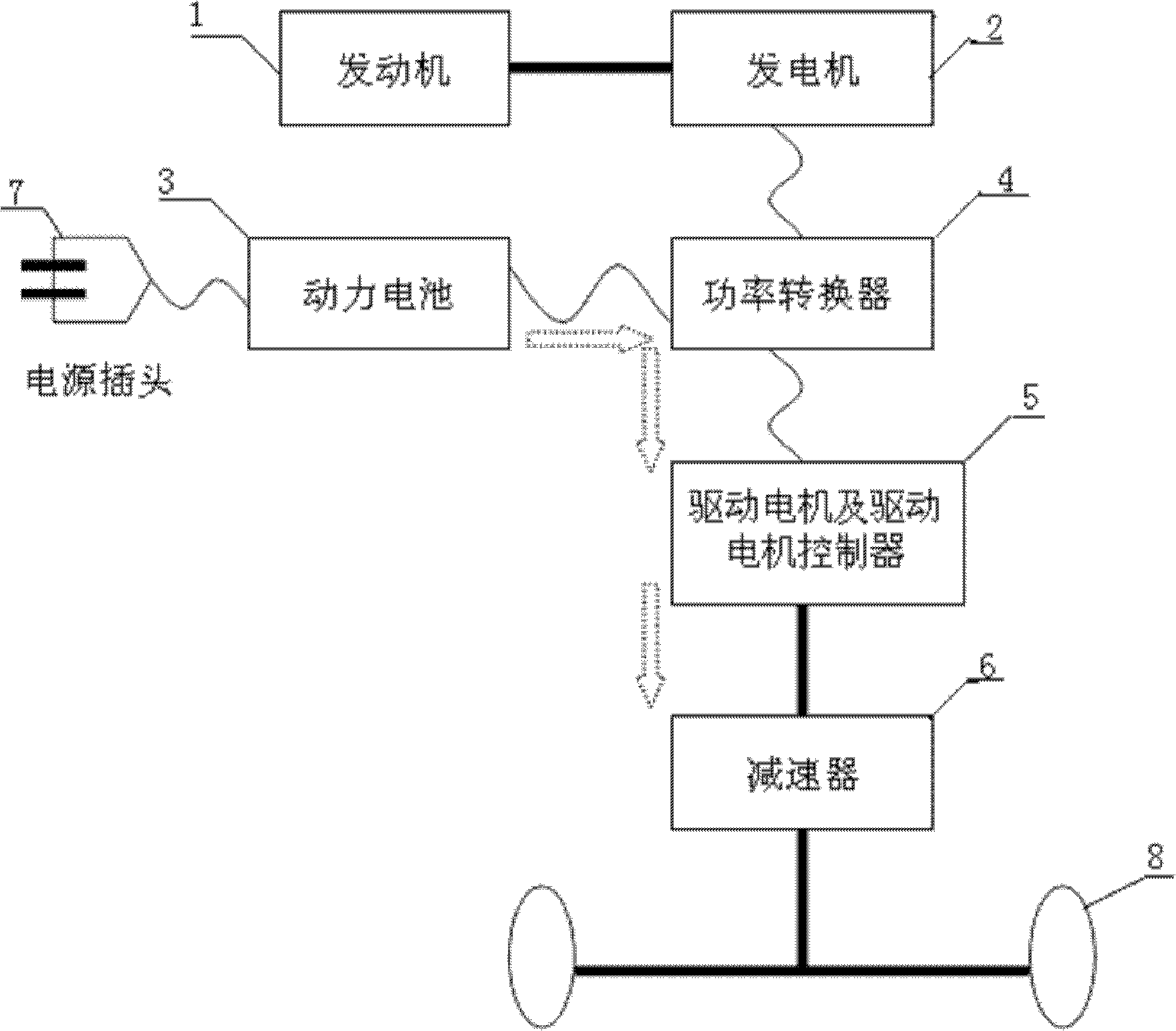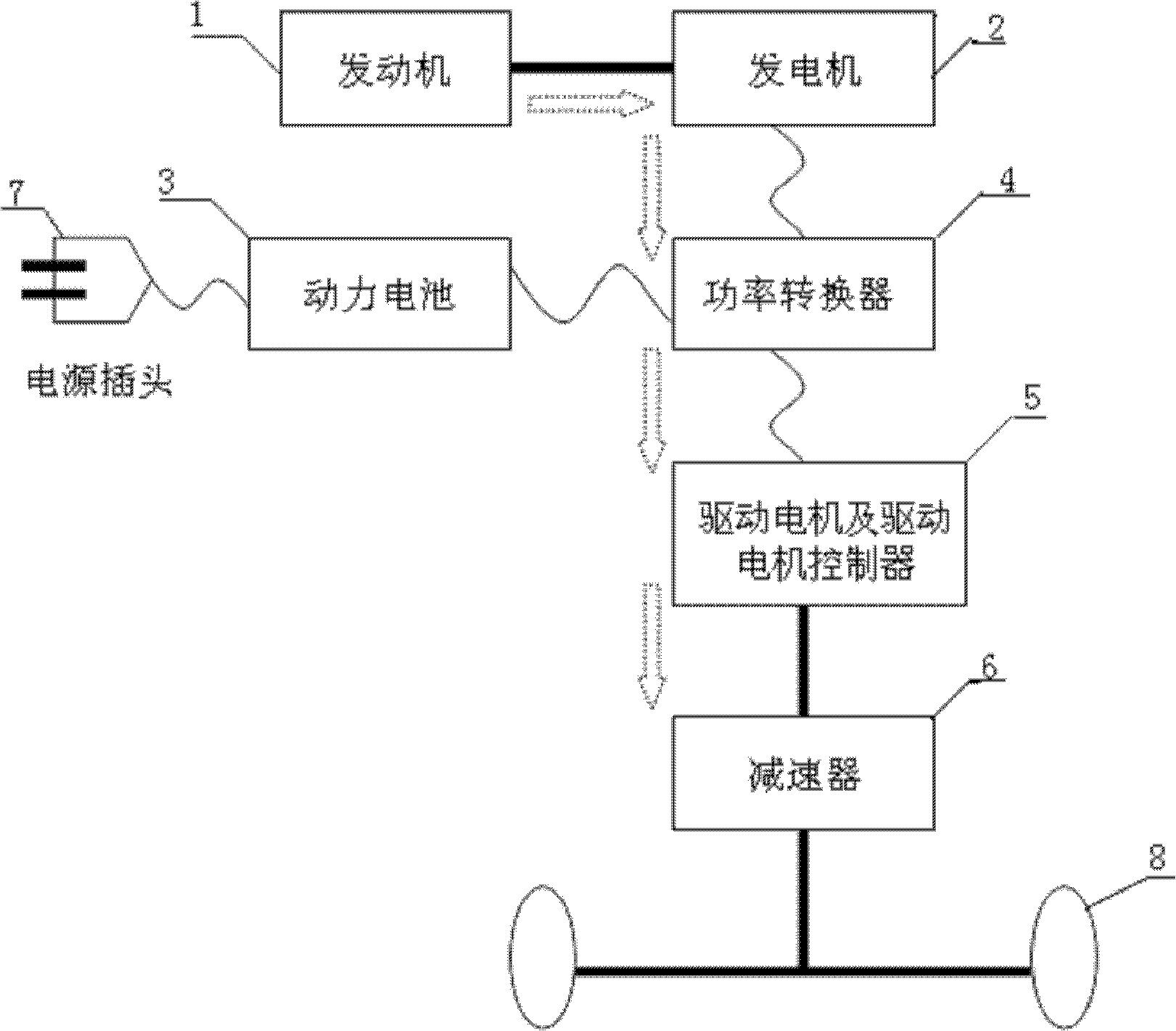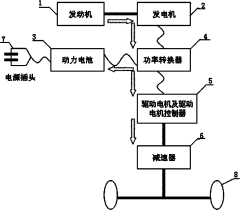How PHEV innovations comply with international emissions standards
AUG 14, 20259 MIN READ
Generate Your Research Report Instantly with AI Agent
Patsnap Eureka helps you evaluate technical feasibility & market potential.
PHEV Emissions Compliance Background and Objectives
Plug-in Hybrid Electric Vehicles (PHEVs) have emerged as a crucial technology in the automotive industry's transition towards more sustainable transportation. These vehicles combine the benefits of both internal combustion engines and electric powertrains, offering a bridge between conventional vehicles and fully electric ones. The background of PHEV emissions compliance is rooted in the growing global concern over climate change and air pollution, which has led to increasingly stringent emissions standards worldwide.
The evolution of PHEV technology has been driven by the need to reduce greenhouse gas emissions and improve air quality in urban areas. As governments and regulatory bodies have implemented more rigorous emissions standards, automakers have been compelled to innovate and develop cleaner vehicle technologies. PHEVs represent a significant step in this direction, offering reduced emissions compared to traditional internal combustion engine vehicles while providing the flexibility and range that consumers demand.
The primary objective of PHEV emissions compliance is to meet or exceed the international emissions standards set by various regulatory bodies. These standards typically focus on reducing tailpipe emissions of pollutants such as carbon dioxide (CO2), nitrogen oxides (NOx), particulate matter (PM), and hydrocarbons (HC). Compliance with these standards is crucial for automakers to sell their vehicles in key markets and avoid hefty fines or restrictions.
Another key objective is to improve the overall environmental performance of PHEVs throughout their lifecycle. This includes not only reducing emissions during vehicle operation but also considering the environmental impact of manufacturing processes, battery production, and end-of-life recycling. Automakers are increasingly focusing on developing more sustainable supply chains and manufacturing practices to address these concerns.
Innovations in PHEV technology aim to enhance the electric-only range of these vehicles, thereby reducing the reliance on the internal combustion engine and further lowering emissions. This involves advancements in battery technology, power electronics, and energy management systems. Additionally, improvements in regenerative braking systems and powertrain efficiency contribute to better overall emissions performance.
The development of smart charging infrastructure and vehicle-to-grid (V2G) technologies also plays a crucial role in PHEV emissions compliance. By optimizing charging patterns and enabling PHEVs to interact with the power grid, these innovations can help reduce the overall carbon footprint of the transportation sector and support the integration of renewable energy sources.
As emissions standards continue to evolve, the automotive industry faces the challenge of balancing technological innovation with cost-effectiveness and consumer acceptance. The goal is to develop PHEV solutions that not only meet regulatory requirements but also provide an attractive value proposition to consumers, encouraging wider adoption of these cleaner vehicle technologies.
The evolution of PHEV technology has been driven by the need to reduce greenhouse gas emissions and improve air quality in urban areas. As governments and regulatory bodies have implemented more rigorous emissions standards, automakers have been compelled to innovate and develop cleaner vehicle technologies. PHEVs represent a significant step in this direction, offering reduced emissions compared to traditional internal combustion engine vehicles while providing the flexibility and range that consumers demand.
The primary objective of PHEV emissions compliance is to meet or exceed the international emissions standards set by various regulatory bodies. These standards typically focus on reducing tailpipe emissions of pollutants such as carbon dioxide (CO2), nitrogen oxides (NOx), particulate matter (PM), and hydrocarbons (HC). Compliance with these standards is crucial for automakers to sell their vehicles in key markets and avoid hefty fines or restrictions.
Another key objective is to improve the overall environmental performance of PHEVs throughout their lifecycle. This includes not only reducing emissions during vehicle operation but also considering the environmental impact of manufacturing processes, battery production, and end-of-life recycling. Automakers are increasingly focusing on developing more sustainable supply chains and manufacturing practices to address these concerns.
Innovations in PHEV technology aim to enhance the electric-only range of these vehicles, thereby reducing the reliance on the internal combustion engine and further lowering emissions. This involves advancements in battery technology, power electronics, and energy management systems. Additionally, improvements in regenerative braking systems and powertrain efficiency contribute to better overall emissions performance.
The development of smart charging infrastructure and vehicle-to-grid (V2G) technologies also plays a crucial role in PHEV emissions compliance. By optimizing charging patterns and enabling PHEVs to interact with the power grid, these innovations can help reduce the overall carbon footprint of the transportation sector and support the integration of renewable energy sources.
As emissions standards continue to evolve, the automotive industry faces the challenge of balancing technological innovation with cost-effectiveness and consumer acceptance. The goal is to develop PHEV solutions that not only meet regulatory requirements but also provide an attractive value proposition to consumers, encouraging wider adoption of these cleaner vehicle technologies.
Market Demand for Low-Emission PHEVs
The global market for low-emission Plug-in Hybrid Electric Vehicles (PHEVs) has been experiencing significant growth in recent years, driven by increasing environmental concerns and stringent emissions regulations. Consumers are increasingly seeking vehicles that offer both the benefits of electric propulsion and the convenience of traditional internal combustion engines, making PHEVs an attractive option for those looking to reduce their carbon footprint without compromising on range or performance.
In major automotive markets such as Europe, North America, and China, the demand for low-emission PHEVs has been particularly strong. These regions have implemented strict emissions standards and offer various incentives for the adoption of cleaner vehicles, further stimulating market growth. For instance, in the European Union, the introduction of more stringent CO2 emissions targets for new cars has led to a surge in PHEV sales, as automakers strive to meet these regulations.
The market demand for low-emission PHEVs is also being driven by advancements in battery technology and charging infrastructure. As battery costs continue to decrease and energy density improves, PHEVs are becoming more affordable and capable of longer electric-only ranges. This increased performance is attracting a broader range of consumers, including those who previously may have been hesitant to adopt electrified vehicles due to range anxiety or cost concerns.
Corporate and fleet buyers represent another significant segment driving the demand for low-emission PHEVs. Many companies are adopting sustainability goals and looking to reduce their carbon emissions, making PHEVs an attractive option for corporate fleets. These vehicles offer the flexibility to operate in zero-emission modes in urban areas while still providing the range needed for longer trips.
The growing awareness of air quality issues, particularly in urban areas, is also contributing to the increased demand for low-emission PHEVs. Cities around the world are implementing low-emission zones and other measures to combat air pollution, creating a favorable environment for PHEV adoption. Consumers living in or frequently traveling to these areas are increasingly opting for PHEVs to ensure compliance with local regulations and avoid potential restrictions on vehicle use.
As governments worldwide continue to tighten emissions standards and set ambitious targets for reducing greenhouse gas emissions, the market demand for low-emission PHEVs is expected to grow further. Automakers are responding to this demand by expanding their PHEV offerings across various vehicle segments, from compact cars to SUVs and luxury vehicles, catering to diverse consumer preferences and needs.
In major automotive markets such as Europe, North America, and China, the demand for low-emission PHEVs has been particularly strong. These regions have implemented strict emissions standards and offer various incentives for the adoption of cleaner vehicles, further stimulating market growth. For instance, in the European Union, the introduction of more stringent CO2 emissions targets for new cars has led to a surge in PHEV sales, as automakers strive to meet these regulations.
The market demand for low-emission PHEVs is also being driven by advancements in battery technology and charging infrastructure. As battery costs continue to decrease and energy density improves, PHEVs are becoming more affordable and capable of longer electric-only ranges. This increased performance is attracting a broader range of consumers, including those who previously may have been hesitant to adopt electrified vehicles due to range anxiety or cost concerns.
Corporate and fleet buyers represent another significant segment driving the demand for low-emission PHEVs. Many companies are adopting sustainability goals and looking to reduce their carbon emissions, making PHEVs an attractive option for corporate fleets. These vehicles offer the flexibility to operate in zero-emission modes in urban areas while still providing the range needed for longer trips.
The growing awareness of air quality issues, particularly in urban areas, is also contributing to the increased demand for low-emission PHEVs. Cities around the world are implementing low-emission zones and other measures to combat air pollution, creating a favorable environment for PHEV adoption. Consumers living in or frequently traveling to these areas are increasingly opting for PHEVs to ensure compliance with local regulations and avoid potential restrictions on vehicle use.
As governments worldwide continue to tighten emissions standards and set ambitious targets for reducing greenhouse gas emissions, the market demand for low-emission PHEVs is expected to grow further. Automakers are responding to this demand by expanding their PHEV offerings across various vehicle segments, from compact cars to SUVs and luxury vehicles, catering to diverse consumer preferences and needs.
Current PHEV Emissions Technology Challenges
Plug-in Hybrid Electric Vehicles (PHEVs) face significant challenges in meeting increasingly stringent international emissions standards. One of the primary hurdles is the complexity of managing dual powertrains - the internal combustion engine (ICE) and the electric motor. This complexity makes it difficult to optimize emissions across all driving conditions, particularly during the transition between electric and ICE modes.
The limited electric range of many PHEVs presents another challenge. When the battery is depleted, PHEVs rely solely on their ICE, potentially leading to higher emissions than conventional hybrid vehicles. This issue is exacerbated by the fact that many PHEV owners do not charge their vehicles regularly, effectively negating the emissions benefits of the electric powertrain.
Real-world driving conditions pose a significant challenge to PHEV emissions compliance. Laboratory testing often fails to accurately represent the diverse range of driving scenarios encountered in daily use. This discrepancy can lead to higher-than-expected emissions in real-world conditions, particularly in cold weather or during aggressive driving.
The cold-start emissions of PHEVs remain a persistent issue. When the ICE starts after periods of electric-only operation, it may produce higher emissions until it reaches optimal operating temperature. This problem is particularly acute in regions with colder climates, where frequent engine starts are necessary for cabin heating.
Battery degradation over time can also impact PHEV emissions performance. As the battery capacity decreases, the vehicle may rely more heavily on its ICE, potentially increasing overall emissions. This long-term performance issue is not always adequately addressed in current emissions testing protocols.
The integration of advanced emissions control technologies, such as selective catalytic reduction (SCR) and gasoline particulate filters (GPF), presents both opportunities and challenges. While these technologies can significantly reduce emissions, they add complexity, cost, and weight to PHEVs, potentially impacting their overall efficiency and market competitiveness.
Lastly, the variability in international emissions standards creates challenges for PHEV manufacturers aiming for global compliance. Different regions may prioritize different pollutants or have varying test cycles, necessitating complex and potentially costly adaptations for different markets. This regulatory landscape requires PHEV innovations to be flexible and adaptable to meet diverse global requirements while maintaining performance and cost-effectiveness.
The limited electric range of many PHEVs presents another challenge. When the battery is depleted, PHEVs rely solely on their ICE, potentially leading to higher emissions than conventional hybrid vehicles. This issue is exacerbated by the fact that many PHEV owners do not charge their vehicles regularly, effectively negating the emissions benefits of the electric powertrain.
Real-world driving conditions pose a significant challenge to PHEV emissions compliance. Laboratory testing often fails to accurately represent the diverse range of driving scenarios encountered in daily use. This discrepancy can lead to higher-than-expected emissions in real-world conditions, particularly in cold weather or during aggressive driving.
The cold-start emissions of PHEVs remain a persistent issue. When the ICE starts after periods of electric-only operation, it may produce higher emissions until it reaches optimal operating temperature. This problem is particularly acute in regions with colder climates, where frequent engine starts are necessary for cabin heating.
Battery degradation over time can also impact PHEV emissions performance. As the battery capacity decreases, the vehicle may rely more heavily on its ICE, potentially increasing overall emissions. This long-term performance issue is not always adequately addressed in current emissions testing protocols.
The integration of advanced emissions control technologies, such as selective catalytic reduction (SCR) and gasoline particulate filters (GPF), presents both opportunities and challenges. While these technologies can significantly reduce emissions, they add complexity, cost, and weight to PHEVs, potentially impacting their overall efficiency and market competitiveness.
Lastly, the variability in international emissions standards creates challenges for PHEV manufacturers aiming for global compliance. Different regions may prioritize different pollutants or have varying test cycles, necessitating complex and potentially costly adaptations for different markets. This regulatory landscape requires PHEV innovations to be flexible and adaptable to meet diverse global requirements while maintaining performance and cost-effectiveness.
Existing PHEV Emissions Reduction Solutions
01 Hybrid powertrain optimization for emissions reduction
Innovations in PHEV powertrains focus on optimizing the interaction between electric motors and internal combustion engines to minimize emissions. This includes advanced control strategies for power distribution, regenerative braking systems, and intelligent energy management to maximize electric-only operation in urban environments.- Advanced powertrain control strategies: Innovative control strategies for PHEV powertrains focus on optimizing the balance between electric and combustion engine operation to minimize emissions. These strategies may include predictive algorithms, real-time adaptation to driving conditions, and intelligent energy management systems that prioritize electric-only operation in urban areas or low-emission zones.
- Improved battery and electric drive systems: Advancements in battery technology and electric drive systems for PHEVs aim to extend all-electric range and reduce reliance on the internal combustion engine. This includes developments in high-energy-density batteries, more efficient electric motors, and advanced thermal management systems to optimize battery performance and longevity.
- Enhanced exhaust aftertreatment technologies: Innovations in exhaust aftertreatment systems for PHEVs focus on reducing emissions during combustion engine operation. This may include advanced catalytic converters, particulate filters, and NOx reduction technologies specifically designed for the intermittent use patterns of PHEV engines.
- Intelligent charging and grid integration: Smart charging solutions and improved grid integration for PHEVs aim to optimize charging patterns based on grid demand and renewable energy availability. This can help reduce overall emissions associated with electricity generation and improve the environmental impact of PHEV operation.
- Emissions monitoring and reporting systems: Advanced on-board diagnostics and emissions monitoring systems for PHEVs provide real-time data on vehicle emissions and performance. These systems can help optimize vehicle operation, identify potential issues, and provide valuable data for regulatory compliance and further emissions reduction efforts.
02 Advanced battery management systems
PHEVs incorporate sophisticated battery management systems to enhance electric range and reduce overall emissions. These systems optimize battery charging and discharging cycles, monitor battery health, and implement predictive algorithms to maximize electric-only driving modes based on route information and driving patterns.Expand Specific Solutions03 Intelligent charging infrastructure
Innovations in PHEV charging infrastructure aim to reduce emissions by optimizing charging times and locations. This includes smart grid integration, vehicle-to-grid (V2G) technology, and predictive charging systems that utilize renewable energy sources when available to minimize the carbon footprint of electricity consumption.Expand Specific Solutions04 Lightweight materials and aerodynamic design
PHEVs incorporate advanced lightweight materials and aerodynamic designs to reduce overall vehicle weight and improve efficiency. This includes the use of composite materials, optimized body shapes, and active aerodynamic features that contribute to lower energy consumption and reduced emissions across both electric and hybrid driving modes.Expand Specific Solutions05 Emissions monitoring and control systems
Advanced emissions monitoring and control systems are integrated into PHEVs to ensure optimal performance and compliance with environmental regulations. These systems include real-time emissions tracking, adaptive engine control strategies, and advanced catalytic converters designed specifically for hybrid powertrains to minimize pollutant output.Expand Specific Solutions
Key PHEV Manufacturers and Suppliers
The competition landscape for PHEV innovations complying with international emissions standards is characterized by a mature market with significant growth potential. Major automotive manufacturers like Ford, Volvo, and Hyundai Mobis are investing heavily in this technology, driven by stringent global emissions regulations. The market is experiencing rapid expansion due to increasing consumer demand for eco-friendly vehicles and government incentives. Technological advancements from companies such as Johnson Matthey and Shell are focusing on improving battery efficiency and reducing emissions. Collaboration between established automakers and emerging players like Chery Automobile and SAIC GM Wuling is accelerating innovation in this field, indicating a highly competitive and dynamic market environment.
Ford Global Technologies LLC
Technical Solution: Ford's PHEV innovations focus on advanced powertrain control strategies to optimize emissions compliance. They have developed a predictive energy management system that uses real-time data and machine learning algorithms to anticipate driving conditions and adjust the power split between electric and combustion engines accordingly[1]. This system enables the vehicle to maximize electric-only operation in low-emission zones and urban areas, while seamlessly transitioning to hybrid mode for longer trips. Ford has also implemented a smart charging strategy that encourages off-peak charging to reduce grid strain and associated emissions[2]. Additionally, they have developed an advanced exhaust after-treatment system with a close-coupled catalyst design that rapidly reaches operating temperature, significantly reducing cold-start emissions which are a major contributor to overall vehicle emissions[3].
Strengths: Adaptive powertrain control, smart grid integration, and rapid catalyst warm-up. Weaknesses: Complexity of systems may increase costs and potential for technical issues.
Ford Motor Co.
Technical Solution: Ford Motor Co.'s PHEV innovations are centered around their PowerSplit architecture, which allows for seamless transition between electric and hybrid modes. They have developed an advanced thermal management system that optimizes battery temperature for improved efficiency and longevity[7]. Ford's PHEVs utilize a regenerative braking system that captures up to 94% of braking energy, significantly improving overall efficiency[8]. To meet stringent emissions standards, Ford has implemented a closed-loop fuel system with advanced sensors that continuously monitor and adjust fuel mixture for optimal combustion. Their latest PHEVs also feature an intelligent range calculator that factors in driving habits, weather conditions, and route topography to provide accurate estimates of electric range and optimal charging points[9]. Ford has also focused on reducing manufacturing emissions through the use of renewable energy in their production facilities.
Strengths: Efficient PowerSplit architecture, advanced regenerative braking, and intelligent range prediction. Weaknesses: Limited all-electric range compared to some competitors, and potential for system complexity leading to higher maintenance costs.
Core PHEV Emissions Control Innovations
Systems and methods for drive mode control
PatentPendingUS20250222916A1
Innovation
- A method for controlling PHEV operation by receiving route data, determining electric range, and adjusting drive modes to suppress engine operation or prioritize low-carbon fuel use, including charge sustaining or increasing modes before refueling, and suggesting low-emission charging or refueling stops based on route conditions.
Cost based method for optimizing external PHEV (Plug-in Hybrid Electric Vehicle) power assembly and application thereof
PatentInactiveCN102180169A
Innovation
- By establishing a cost-based optimization method, determine the variables to be optimized and construct a cost objective function equation, and use quadratic programming or matrix partitioning optimization algorithms to optimize the maximum output power of the engine, the maximum output power of the drive motor, the output power of the power battery and the capacity of the power battery pack. , to achieve the lowest cost powertrain design.
Global Emissions Standards Landscape
The global emissions standards landscape for Plug-in Hybrid Electric Vehicles (PHEVs) is characterized by a complex web of regulations that vary across regions and countries. These standards are continuously evolving to address the growing concerns over air quality and climate change.
In the European Union, the Euro 6 standards currently govern emissions for passenger cars and light commercial vehicles. These standards set strict limits on various pollutants, including carbon monoxide, nitrogen oxides, and particulate matter. The EU is also implementing increasingly stringent CO2 emission targets for new vehicle fleets, pushing manufacturers to adopt more efficient technologies like PHEVs.
The United States employs a dual system of federal and state-level regulations. At the federal level, the Environmental Protection Agency (EPA) sets emissions standards under the Clean Air Act. California, with its unique authority to set its own standards, often leads the way with more stringent requirements that are frequently adopted by other states.
China, the world's largest automotive market, has implemented the China 6 emissions standards, which are comparable to Euro 6 in terms of stringency. These standards are being rolled out in phases, with major cities adopting them first before nationwide implementation.
Japan's emissions regulations are among the most stringent globally, with the country continually updating its standards to reduce pollution and promote fuel efficiency. The Japanese government has also set ambitious targets for the adoption of next-generation vehicles, including PHEVs.
Many other countries, including Canada, Australia, and South Korea, often align their emissions standards with those of major markets like the EU or the US, creating a degree of global harmonization. However, differences in testing procedures, implementation timelines, and specific pollutant limits still exist.
The global trend is towards increasingly strict emissions standards, with many countries announcing plans to phase out internal combustion engines entirely in the coming decades. This shift is driving innovation in PHEV technology, as manufacturers strive to develop vehicles that can meet these evolving standards while still providing the flexibility and range that consumers demand.
In the European Union, the Euro 6 standards currently govern emissions for passenger cars and light commercial vehicles. These standards set strict limits on various pollutants, including carbon monoxide, nitrogen oxides, and particulate matter. The EU is also implementing increasingly stringent CO2 emission targets for new vehicle fleets, pushing manufacturers to adopt more efficient technologies like PHEVs.
The United States employs a dual system of federal and state-level regulations. At the federal level, the Environmental Protection Agency (EPA) sets emissions standards under the Clean Air Act. California, with its unique authority to set its own standards, often leads the way with more stringent requirements that are frequently adopted by other states.
China, the world's largest automotive market, has implemented the China 6 emissions standards, which are comparable to Euro 6 in terms of stringency. These standards are being rolled out in phases, with major cities adopting them first before nationwide implementation.
Japan's emissions regulations are among the most stringent globally, with the country continually updating its standards to reduce pollution and promote fuel efficiency. The Japanese government has also set ambitious targets for the adoption of next-generation vehicles, including PHEVs.
Many other countries, including Canada, Australia, and South Korea, often align their emissions standards with those of major markets like the EU or the US, creating a degree of global harmonization. However, differences in testing procedures, implementation timelines, and specific pollutant limits still exist.
The global trend is towards increasingly strict emissions standards, with many countries announcing plans to phase out internal combustion engines entirely in the coming decades. This shift is driving innovation in PHEV technology, as manufacturers strive to develop vehicles that can meet these evolving standards while still providing the flexibility and range that consumers demand.
PHEV Lifecycle Environmental Impact
The lifecycle environmental impact of Plug-in Hybrid Electric Vehicles (PHEVs) is a critical consideration in assessing their compliance with international emissions standards. PHEVs offer a unique combination of electric and conventional propulsion, which necessitates a comprehensive evaluation of their environmental footprint from production to disposal.
During the manufacturing phase, PHEVs require additional components compared to conventional vehicles, particularly in the battery system. The production of lithium-ion batteries involves energy-intensive processes and the extraction of rare earth metals, which can lead to increased carbon emissions and environmental degradation in mining regions. However, advancements in battery technology and manufacturing processes are gradually reducing these impacts.
In the use phase, PHEVs demonstrate significant advantages in terms of emissions reduction. When operating in electric mode, they produce zero tailpipe emissions, contributing to improved air quality in urban areas. The extent of this benefit depends on the electric range and the frequency of charging. Moreover, the overall emissions impact is influenced by the electricity grid's carbon intensity, which varies by region and is progressively becoming cleaner with the integration of renewable energy sources.
Maintenance requirements for PHEVs differ from conventional vehicles, potentially leading to reduced environmental impact from servicing activities. The regenerative braking system, for instance, can extend the lifespan of brake components, reducing the need for replacement parts and associated waste.
End-of-life considerations for PHEVs present both challenges and opportunities. The recycling of battery components is crucial for minimizing environmental impact and conserving resources. Developing efficient recycling processes for lithium-ion batteries is an ongoing focus of research and development, with the potential to significantly reduce the lifecycle emissions of PHEVs.
When comparing the lifecycle emissions of PHEVs to conventional vehicles, studies generally show a net positive impact, particularly in regions with cleaner electricity grids. However, the full benefits are realized over time, as the initial manufacturing emissions are offset by reduced operational emissions. This underscores the importance of long-term usage and proper vehicle maintenance to maximize environmental benefits.
Innovations in PHEV technology continue to enhance their environmental performance. These include improvements in battery energy density, which can extend electric range without increasing battery size and weight. Additionally, advancements in power electronics and thermal management systems are improving overall vehicle efficiency, further reducing emissions during operation.
During the manufacturing phase, PHEVs require additional components compared to conventional vehicles, particularly in the battery system. The production of lithium-ion batteries involves energy-intensive processes and the extraction of rare earth metals, which can lead to increased carbon emissions and environmental degradation in mining regions. However, advancements in battery technology and manufacturing processes are gradually reducing these impacts.
In the use phase, PHEVs demonstrate significant advantages in terms of emissions reduction. When operating in electric mode, they produce zero tailpipe emissions, contributing to improved air quality in urban areas. The extent of this benefit depends on the electric range and the frequency of charging. Moreover, the overall emissions impact is influenced by the electricity grid's carbon intensity, which varies by region and is progressively becoming cleaner with the integration of renewable energy sources.
Maintenance requirements for PHEVs differ from conventional vehicles, potentially leading to reduced environmental impact from servicing activities. The regenerative braking system, for instance, can extend the lifespan of brake components, reducing the need for replacement parts and associated waste.
End-of-life considerations for PHEVs present both challenges and opportunities. The recycling of battery components is crucial for minimizing environmental impact and conserving resources. Developing efficient recycling processes for lithium-ion batteries is an ongoing focus of research and development, with the potential to significantly reduce the lifecycle emissions of PHEVs.
When comparing the lifecycle emissions of PHEVs to conventional vehicles, studies generally show a net positive impact, particularly in regions with cleaner electricity grids. However, the full benefits are realized over time, as the initial manufacturing emissions are offset by reduced operational emissions. This underscores the importance of long-term usage and proper vehicle maintenance to maximize environmental benefits.
Innovations in PHEV technology continue to enhance their environmental performance. These include improvements in battery energy density, which can extend electric range without increasing battery size and weight. Additionally, advancements in power electronics and thermal management systems are improving overall vehicle efficiency, further reducing emissions during operation.
Unlock deeper insights with Patsnap Eureka Quick Research — get a full tech report to explore trends and direct your research. Try now!
Generate Your Research Report Instantly with AI Agent
Supercharge your innovation with Patsnap Eureka AI Agent Platform!
